Results 6,481 to 6,490 of 12094
Thread: Anandtech News
-
11-21-16, 01:15 PM #6481
Anandtech: ADATA Launches the SD700 External SSD: Dust, Water and Shock Resistant (wi
ADATA last week introduced its third SSD featuring 3D NAND memory. The new SD700 is a dust, water and shockproof drive that has up to 1 TB of capacity as well as a weight of only 100 grams. The SSD uses the USB 3.0 interface and is compatible with the majority of modern PCs.
The ADATA SD700 comes in a metal enclosure with rubber inlays/pads to ensure hermetic sealing and shock resistance. The company plans to offer three configurations of the drive with 256 GB, 512 GB and 1 TB capacities, all featuring up to 440 MB/s read speed (as conditioned by the maximum real-world transfer rate of USB 3.0 interface due to overhead incurred by 8b/10b encoding). The claimed transfer rates of the SD700 are the same as those of the Samsung Portable SSD P3 (which also used 3D NAND), but the real-world performance of the novelty is yet to be discovered. From a compatibility point of view, the external drives are also similar: they can work with Microsoft Windows, Google Android and Apple macOS.
The SD700 from ADATA is based on 384 Gb 3D TLC NAND flash chips made by IMFT and while the SSD maker does not reveal specifics, it is highly likely that the drive uses Silicon Motion’s SM2258 controller (just like other 3D NAND-powered products by ADATA) accompanied by a USB-to-SATA bridge.
ADATA designed and tested its SD700 drive to IEC IP68 standard to ensure that it dust-tight and can operate for 60 minutes while submerged in 1.5 meters of water. In addition, the maker also tested its new external SSD to the U.S. Army MIL-STD-810G516.6 shock and drop resistance standard. The SD700 will join ADATA’s family of external SSDs and will be among the first 3D NAND-based external drives that meet the IP68 and the MIL-STD-810G516.6 requirements.
The endurance of 3D NAND, as well as the rugged design, will make the ADATA SD700 a good choice for users that who transfer large amounts of data often and would like to ensure that their information will not be corrupted either as a result of degradation of non-volatile memory or because of a physical damage. For additional piece of mind, ADATA offers a three-year limited warranty with its SD700 drives.ADATA SD700 Specifications 256 GB 512 GB 1 TB Speed Up to 440 MB Interface USB 3.0 Dimensions 83.5 × 83.5 × 13.9 mm
3.3 × 3.3 × 0.5 inchesModel Number ASD700-256GU3
-CBK (black)
-CYL (yellow)ASD700-512GU3
-CBK (black)
-CYL (yellow)ASD700-1TU3
-CBK (black)
-CYL (yellow)
The ADATA SD700 external SSDs will be available in all-black as well as black and yellow color schemes shortly at Amazon and Newegg. The 256 GB version will cost $109.99, whereas the 512 GB version will be priced at $189.99. At least from a pricing standpoint, the new SSDs from ADATA look very competitive because they are roughly two times cheaper than LaCie’s Rugged Thunderbolt + USB 3.0 SSDs of the same capacity.
Gallery: ADATA Launches SD700: Dust, Water and Shock Resistant External SSD with 3D NAND





Related Reading:
- ADATA SE730, SV620 and SC660 External SSDs Review
- ADATA Ultimate SU800 SSDs in M.2 Announced: Entry-Level 3D NAND SSDs for Laptops
- ADATA Launches XPG SX8000: High-End M.2 NVMe SSD Featuring 3D MLC NAND
- ADATA Introduces Ultimate SU800 SSD: SMI Controller, 3D NAND, SATA Interface
More...
-
11-22-16, 10:00 AM #6482
Anandtech: The Intel SSD 600p (512GB) Review
Intel's SSD 600p was the first PCIe SSD using TLC NAND to hit the consumer market. It is Intel's first consumer SSD with 3D NAND and it is by far the most affordable NVMe SSD: current pricing is on par with mid-range SATA SSDs. While most other consumer PCIe SSDs have been enthusiast-oriented products aiming to deliver the highest performance possible, the Intel 600p merely attempts to break the speed limits of SATA without breaking the bank.
More...
-
11-22-16, 12:14 PM #6483
Anandtech: Plextor Launches EX1 USB-C External SSD: Up to 550 MBps, 512 GB and LDPC
Plextor this week formally launched its first external SSD which it demonstrated back in early June at Computex. The Plextor EX1 combines low weight, high capacity, a high quoted performance with a USB 3.1 Type-C interface. Moreover, the manufacturer promises increased endurance as well as reliability due to an advanced SSD controller and even offers the drive with a five-year warranty.
As reported initially, the Plextor EX1 SSDs will be available in 128 GB, 256 GB and 512 GB configurations. The drives will use USB 3.1 Gen2 Type-C interface with up to 10 Gb/s transfer rate and thus will be compatible with both currently available (via USB-C to USB-A adapter) and upcoming PCs. Since the EX1 is a fully-fledged SSD, not a flash drive, the compatibility with future systems was a requirement in the product design. Moreover, to emphasize that this is not a USB stick, the EX1 has a USB-C receptacle rather than a connector, which means that owners will have to use a cable to plug the drive into their systems (not very comfortable, but ensures that nothing accidentally breaks down as a result of careless usages).
Plextor does not reveal a lot of details about the product, but claims that it uses a Marvell controller that supports LDPC error correction technology as well as PlexNitro feature (both technologies are used by Plextor in their TLC NAND-based drives), a VIA Labs VL716 USB 3.1-to-SATA bridge as well as Toshiba’s TLC NAND made using a 15 nm process. Since Plextor already has a working SSD platform featuring the Marvell 88SS1074B1 controller and Toshiba’s 15 nm TLC NAND (used in its M7V drives), it is highly likely that this platform served as the base for the EX1 as well. On the other hand, the EX1 has a longer warranty, but the same 1.5 million hours MTBF rating and similar general performance specs.
Speaking of performance, Plextor claims that the EX1 is capable of up to 550 MB/s read speed as well as up to 500 MB/s write speed (obviously, when pseudo-SLC caching is used), which is in line with performance of the M7V SSDs and is faster than declared transfer rate of the Samsung Portable T3 SSD (yet, this one has considerably higher capacity). Nonetheless, keep in mind that the real-world performance of SSDs is typically lower than that specified.
When it comes to features, the Plextor EX1 looks just like a typical SSD drive for desktop computers: it supports TRIM, NCQ, SMART features and relies on the ATA/ATAPI-8 protocol. The drive is compatible with Microsoft Windows, Google Android, Apple macOS and Linux, but with certain limitations imposed by different file systems. For example, Android only supports exFAT and FAT32, but not NTFS, whereas FAT32 does not support files larger than 4 GB. Meanwhile, exFAT is not supported by Linux.Plextor M7V and M6V SSD Specifications Size 128 GB 256 GB 512 GB Controller Marvell 88SS1074B1 (?) NAND Toshiba 15 nm Toggle TLC DRAM Cache 256 MB (?) 512 MB (?) 1 GB (?) Sequential Read 550 MB/s Sequential Write 500 MB/s Interface Physical USB Type-C receptacle Logical USB 3.1 Gen 2 Transfer Rate 10 Gbps Compatibility Backwards compatible with previous-gen USB standards
and connectors using adaptersCommand Set TRIM, S.M.A.R.T., NCQ, ATA/ATAPI-8 OS Compatibility Apple macOS, Google Android, Microsoft Windows, Linux Security Fnet encryption software Dimensions 101.2 × 31.6 × 8.7 mm
3.98 × 1.24 × 0.34 inchesWeight 30 grams Apparance Silver color and Gold color enclosure made of anodized aluminum Accessories USB 3.1 Type-C to Type-A cable
Flannel BagWarranty 5 years
The Plextor EX1 drives come in gold and silver colored enclosures made of anodized aluminum, their weight is around 30 grams. The drives are not too small: their length is a little over 10 centimeters (~4 inches) and their thickness is approximately 8.7 mm (0.34 inches).
Plextor plans to start selling the Plextor EX1 SSDs this month. Exact price points are unknown, but Plextor will also offer Fnet encryption software with the drives.
Gallery: Plextor Launches EX1 USB-C SSD: Up to 550 MB/s, 512 GB and LDPC





Related Reading:
- Plextor Embraces TLC NAND: Introduces M7V SSD
- ADATA Launches SD700: Dust, Water and Shock Resistant External SSD with 3D NAND
- ADATA SE730, SV620 and SC660 External SSDs Review
- ADATA Ultimate SU800 SSDs in M.2 Announced: Entry-Level 3D NAND SSDs for Laptops
More...
-
11-22-16, 03:33 PM #6484
Anandtech: MSI Adds Low-Profile GeForce GTX 1050 Ti to Lineup
MSI has quietly added a new low-profile graphics card into their lineup. The adapter is based on NVIDIA’s GeForce GTX 1050 Ti GPU featuring the latest Pascal architecture and carries 4 GB of GDDR5 memory. The card will replace those powered by NVIDIA’s first-generation Maxwell graphics processors in MSI's lineup and will be among the most affordable gaming-grade graphics boards on the market. The card does not require auxiliary power and is compatible with a wide range of PCs. The drive is still dual slot width, however.
The MSI GeForce GTX 1050 Ti 4GT LP is based on the GP107 GPU (768 stream processors, 48 texture units, 32 raster operations pipelines, 128-bit memory bus) clocked at 1.29/1.39 GHz (base/boost) and carries 4 GB of GDDR5 memory at 7 Gbps. The board has DL-DVI, HDMI 2.0 and DisplayPort 1.4 outputs with HDCP 2.2 support, which is required for Ultra HD Blu-ray playback. Tthe card comes with a dual-slot cooling system featuring two fans.
The low-profile GeForce GTX 1050 Ti consumes up to 75 W of power, and as a result it does not require any auxiliary power connectors - something important when upgrading low-end PCs from large OEM brands that sometimes do not have any spare connectors left. The lack of power connectors will allow the video card to replace the GeForce GTX 750-series and the GeForce GTX 950 75W series adapters with similar power consumption.
Nowadays it is not easy to find a low-profile graphics card with reasonable performance and a good feature-set. NVIDIA’s GM107 GPU is based on the company’s latest Pascal architecture and thus supports DirectX 12 and Vulkan APIs as well as has an advanced media playback engine that supports hardware-accelerated decoding and encoding of H.265 (HEVC) video. Therefore, MSI’s GeForce GTX 1050 Ti 4GT LP graphics card is an interesting product compatible with slim and outdated desktops and HTPCs. As an added bonus, MSI claims that it uses MIL-STD-810G certified components to ensure a long lifespan for the board.
MSI did not announce the price of the GeForce GTX 1050 Ti 4GT LP, but it is unlikely that it is going to cost significantly higher than $139 recommended by NVIDIA.
Gallery: MSI Adds Low-Profile GeForce GTX 1050 Ti to Lineup




Related Reading:
- NVIDIA Announces GeForce GTX 1050 Ti & GTX 1050: Entry-Level Cards Launching October 25th
- MSI Shows New Radeon RX 480 Gaming Cards, with an 8-pin
- NVIDIA Releases GeForce GTX 1060 3GB: GTX 1060, Yet Not
More...
-
11-23-16, 04:49 PM #6485
Anandtech: Samsung Acquires Quantum Dot Tech Company QD Vision
Earlier this week Samsung confirmed that they have acquired QD Vision, the US-based provider of quantum dot technology for consumer displays. According to sources cited by SamMobile, the deal was confirmed ahead of its official announcement next week by Jung Chil-hee, the head of Samsung's Advanced Institute of Technology.
No details about the price of the acquisition are available yet, but from an observer's point of view it makes sense that Samsung would want to acquire companies working in the field of quantum dots. Samsung has been heavily pushing quantum dots in their newest televisions in order to increase their color gamut without having to make use of backlights with multi-color LEDs. With Ultra HD content being mastered in the DCI-P3 or Rec. 2020 color spaces, this has become a necessary feature in high end televisions and monitors for content creation.
QD Vision's technology works in a different manner from the technology Samsung currently uses in their televisions. In order to support HDR, televisions need to use full array backlighting so regions can be dimmed locally, and employing quantum dots in this situation requires a film layer between the backlight and the LCD array, which can be quite costly for larger displays. QD Vision's technology works with edge-lit displays and places tubes of quantum dots between the LEDs and the guide plate that distributes light across the display. I took a look at a monitor that uses QD Vision's technology earlier this year. It's not clear where Samsung plans to utilize QD Vision's technology, but the technology could play a big role in bringing wide color gamuts to lower cost displays, and QD Vision's technology and patents related to quantum dots would also have value to Samsung for further development of the technology in general.
More...
-
11-25-16, 10:58 AM #6486
Anandtech: Adobe Photoshop Elements 15 Comes To The Windows Store
The Windows Store is Microsoft’s big bet, combining software purchases, updates, and installs into a single place. Although it continues to grow, it still doesn’t offer anywhere near the number of big name apps as iOS or Android. Windows still has a massive library of applications, or course, but they are bought, installed, and updated outside of the store.
Clearly one of the ideas is that Microsoft will take a cut on any app sales in the store, so there is motivation for them to make this succeed, but for the end users, it’s been well proven that a solid Store model works for ease of use, and especially updates.
Recently (and possibly today) Adobe Photoshop Elements came to the Windows Store, as pointed out by Paul Thurrott and Windows Central. This is an important app for the Windows Store, where previously only a much lighter version called Adobe Photoshop Express was available. Elements is not the crown jewels of Adobe’s suite, but it’s still an app that many people use.
Although we don’t have official confirmation of this, Adobe Photoshop Elements is almost certainly using Microsoft’s Desktop App Bridge, codenamed Project Centennial. This bridge allows developers to bring older Win32 apps to the Windows Store, and if they so choose, begin to convert them to the Universal Windows Platform. Although Centennial was announced quite a while ago, it wasn’t until the Windows Anniversary Update that Windows had all of the frameworks required. Photoshop Elements certainly isn’t the first Desktop Bridge app to make it to the store, but it’s surely one of the biggest.
By offering this through the Store, end users get the benefits of the store. The app is automatically updated through the store, so you won’t need any Adobe update services running on your PC, and best of all it can be installed on up to ten devices, rather than the two activations that you would get if you purchased this as a traditional software download.
Centennial also packages the app into a container, so the install process is incredibly quick. Elements doesn’t need to install for thirty minutes as it writes files all over your PC, and in your registry. Everything is kept in the container, which also makes uninstall very simple and much cleaner. I just installed Elements, and after the download was complete, it installed in just a few seconds.
With the launch, the software is also on sale for a limited time.
If the Windows Store is going to take off in a meaningful way, apps like these are going to be an important first step. With Windows 10 on over 400,000,000 devices now, there is an incentive for developers to leverage tools like the Desktop App Bridge to utilize the store. For me, the Store model has enough benefits that I would prefer to purchase an app like this through it. It’s worked before on the PC with stores like Steam and Origin as well, and by bringing big name Win32 apps to the store, Microsoft has an important tool to bring existing devs into their new platform.
Source: Windows Central, Thurrott.com
More...
-
11-28-16, 08:53 AM #6487
Anandtech: Discrete Desktop GPU Market Trends Q3 2016: GPU Shipments Hit Two-Year Hig
Shipments of discrete graphics processing units (GPUs) are traditionally high in the third quarter as PC makers and retailers gear up for the holiday season and build up stocks of components. Q3 2016 was particularly good for standalone GPUs because both AMD and NVIDIA introduced a number of new products for different market segments from May to August. Sales of discrete graphics cards for desktop PCs hit a two-year high in the third quarter, according to data released by Jon Peddie Research. What is important is that standalone GPUs performed very well despite a shrink of PC sales.
More...
-
11-28-16, 09:31 AM #6488
Anandtech: Transcend Introduces Extreme Temperature DDR4 SO-DIMMs
Transcend last week introduced a family of DDR4 SO-DIMMs that can operate in extreme temperature conditions. The modules are designed for industrial computers, special-purpose PCs, POS, ATM and other systems that work in rough environments for 24/7. Subsequently, the SO-DIMMs can be used safely in SFF PCs without decent cooling for prolonged amounts of time.
Transcend’s new industrial grade memory modules use special PCBs that have industrial-grade capacitors, 30μm gold-plated contacts and are designed to withstand shock, electromagnetic disturbance and extreme temperatures from –40°C to +85°C. In theory, it means that the SO-DIMMs are rated to operate in Antarctica or in the Lut Desert in Iran. In the real world, Transcend’s new SO-DIMMs will be used inside space-constrained industrial PCs, military systems, embedded systems and others that work 24/7 in rough conditions and/or without decent cooling.
The new industrial-grade modules from Transcend are based on Samsung’s 8 Gb B-die DDR4 chips (marked as K4A8G08) that were hand-picked and tested to run in extreme conditions. The SO-DIMMs come in 8 GB and 16 GB configurations and are rated to operate at 2400 MT/s at 1.2V, which means that they are fully compatible with the industrial-grade, embedded and low-power CPUs that support DDR4 at JEDEC speeds. The new modules carry Transcend’s lifetime warranty.Specifications of Transcend's Industrial DDR4 SO-DIMMs Module Capacity Speed Voltage ECC Part Number 8 GB (ECC) DDR4-2400 1.2 V Yes TS1GSH72V4B-I 8 GB No TS1GSH64V4B-I 16 GB TS2GSH64V4B-I
Pricing of Transcend’s new industrial-grade DDR4 modules is unknown as for industrial customers it typically depends on actual sales volumes. We would expect the modules will be more expensive than typical SO-DIMMs because they use special PCBs with 30μin gold plating, components with extended temperature ranges as well as cherry-picked memory ICs.
Related Reading:
- Patriot to Release Viper DDR4-2400, DDR4-2800 SO-DIMMs for Laptops
- Compulab fitlet-XA10-LAN Review: A Fanless AMD UCFF PC for Networking Applications
- Logic Supply ML100G-30 Fanless Broadwell vPro Industrial NUC Review
- Logic Supply Core-ML320 Fanless Industrial NUC Review
More...
-
11-28-16, 10:14 AM #6489
Anandtech: The OnePlus 3T Review
Back in June, OnePlus launched their new flagship smartphone, the OnePlus 3. I've had an interesting relationship with the OnePlus 3 due to certain decisions that were made regarding its display and some parts of the operating system before the phone initially launched. Since that time, OnePlus has made significant improvements to both of these aspects, and in my follow-up piece I concluded that the OnePlus 3 should be considered by all smartphone buyers, even ones who were ready to pay $700 or $800 for a flagship phone from another company.
Earlier this month OnePlus surprised a number of people in the Android community by launching a successor to the OnePlus 3. This move isn't in line with the yearly cadence that we've come to expect for their smartphones, which makes it all the more interesting. The name of this new phone is the OnePlus 3T, and based on that name one can already see that it represents an evolution of the OnePlus 3 rather than a revolutionary upgrade. As the OnePlus 3's successor, the OnePlus 3T simply serves to update certain aspects of the phone's hardware in order to take advantage of technology improvements that have been made available since the OnePlus 3 was originally developed and released. Read on for the full AnandTech review of the OnePlus 3T.
More...
-
11-28-16, 12:09 PM #6490
Anandtech: The SD Card Association to Classify IOPS Performance of Memory Cards via L
The SD Association this week announced the SD Specification 5.1, which will introduce the so-called Application Performance Classes that will specify minimum read and write IOPS performance supported by the upcoming SD cards. The App Performance Classes are designed to help end users to ensure that memory cards they get are capable of providing decent experience when running applications.
When Panasonic, SanDisk and Toshiba developed the Secure Digital card standard in the late 1990s, their main goal was to create miniature removable devices to store multimedia files (music, images, short videos, etc.) and even operating systems that would be more versatile than MMC cards and would offer a path for future evolution. Over time, SD cards have increased capacity, improved sequential performance and even gained new interleaving modes to enable new usage models (such as recording of 360° videos or multiple video streams at once). In today's climate, usage patterns of SD cards by different people vary greatly. Some need to record and store UHD content, other need to run applications, which is why the former benefit from great sequential performance, whereas the latter need guaranteed sequential and random read/write performance.
Earlier this year the SD Association released the Secure Digital 5.0 specification that takes into account large block sizes of modern NAND flash chips and introduces the new Video Speed Class labels that define minimum write speeds supported by certain cards. Now the SD 5.1 spec introduces App Performance Classes that express minimum sustained sequential performance as well as random read and write IOPS performance. The first defined class is known as A1.
The SD 5.1 defines the App Performance Class 1 (described with one of the A1 symbols) to require SD cards to provide a sustained sequential performance of 10 MB/s, a performance of 1500 random read IOPS as well as 500 random write IOPS. Eventually, the SD Association plans to introduce higher App Performance levels when the market requires. It should be noted that levels of performance of the App Performance Classes are only guaranteed on devices that comply with the SD 5.1 specifications, and are not general catch-all performance certification. As a result, owners of contemporary devices can get new cards and then test them using Google’s benchmark for SD cards to ensure that their performance is sufficient for running apps (or just check out third-party tests of SD cards).App Performance Class 1 (A1) Minimum Performance Measures Sequential Read IOPS Write IOPS 10 MB/s 1500 500
As it usually happens with SD cards, other SD-defined labels (e.g., UHS Speed Class, Video Speed Class, etc.) that determine other characteristics of devices will accompany the new A1 labels. In fact, 10 MB/s sequential performance mandated by the App Performance Class 1 is not too high and various SD cards carrying the UHS Speed Class 1 (as well as the VSC V10) labels offer this level of performance by specification anyway. Meanwhile, the A1 label is the first to ensure that random IOPS performance is sufficient for apps designed with this performance class in mind.SD Card Performance Comparison Minimum Sequential Write Speed Speed Class UHS Speed Class Video Speed Class App Performance Class 90 MB/s V90 60 MB/s V60 30 MB/s 3 V30 10 MB/s 1 V10 A1 6 MB/s 6 V6 4 MB/s 4 2 MB/s 2
Related Reading:
- SD Association Announces SD 5.0 Specification: SD Cards For UHD and 360° Video Capture
- Western Digital Shows Off Prototype 1 TB SDXC Card at Photokina 2016
- Samsung Rolls Out Its First UFS Cards: SSD Performance in Card Form-Factor
More...
Thread Information
Users Browsing this Thread
There are currently 17 users browsing this thread. (0 members and 17 guests)




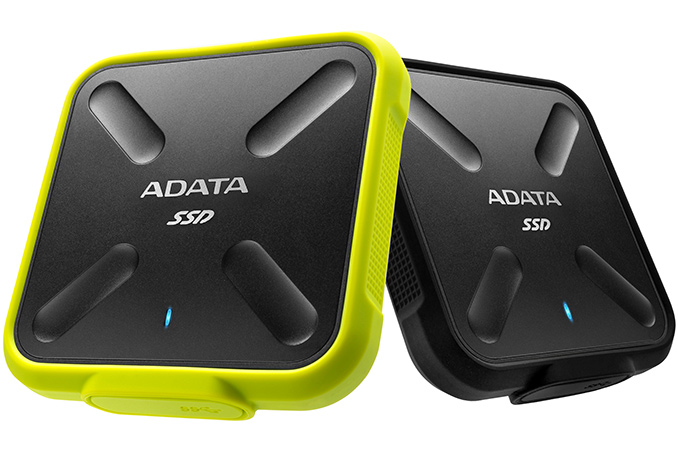

 Quote
Quote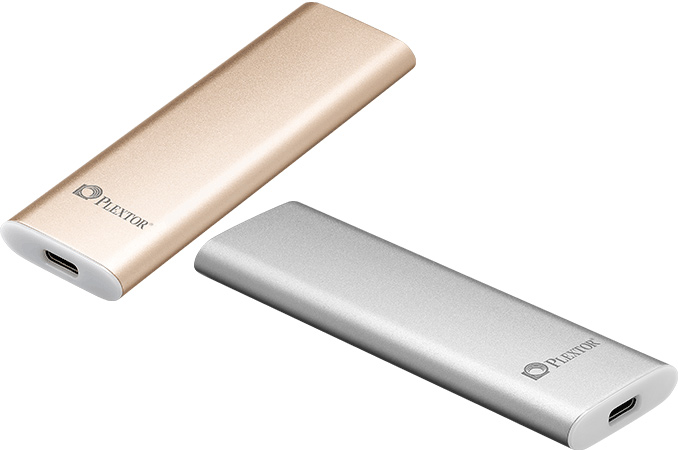
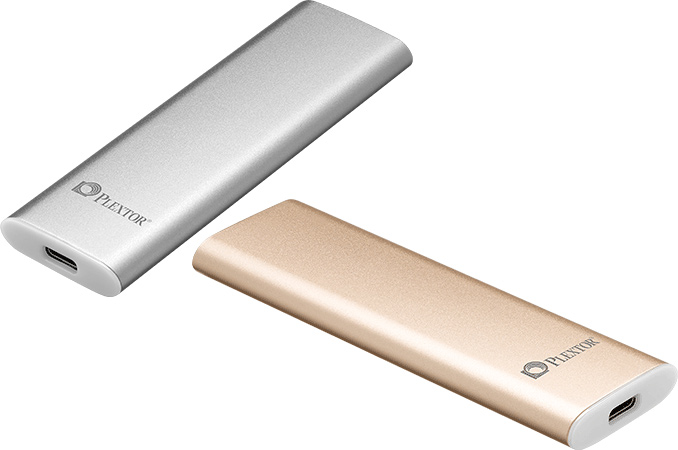
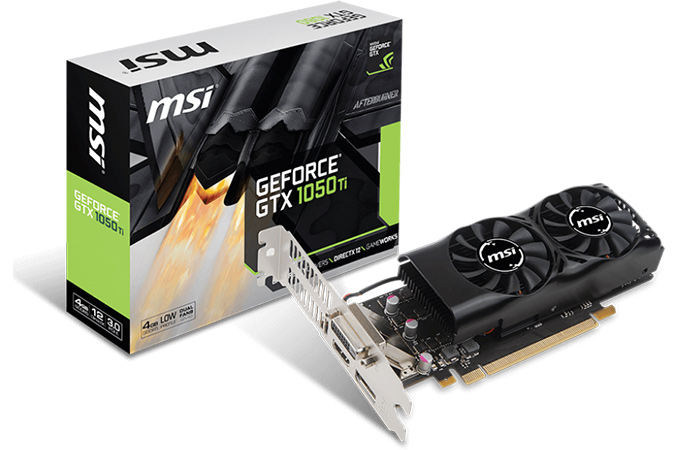

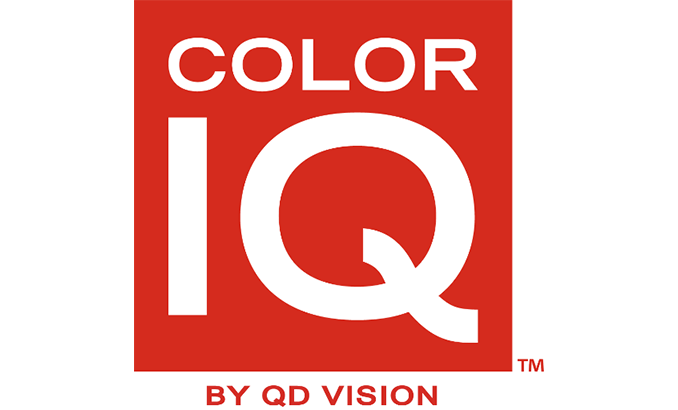

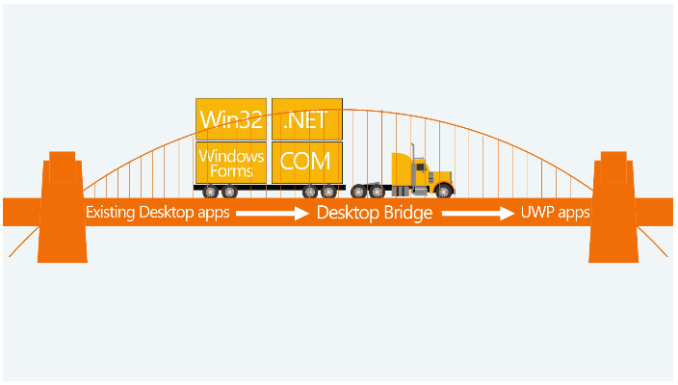



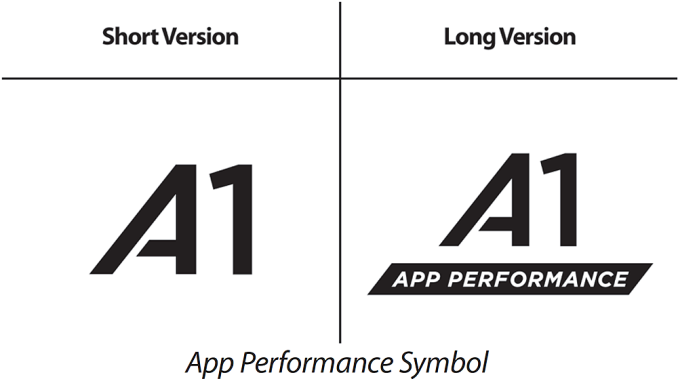
















Bookmarks